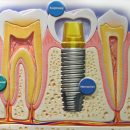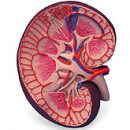In order to protect yourself from this ailment, you need to know what it represents. In this article, our site will tell readers about the reasons, symptoms and prevention of mining diseases.
What is a mountain disease?
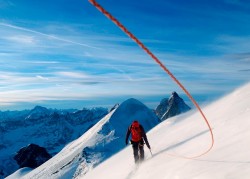
This disease occurs in alpine areas with rarefied air. Risk are subject to climbers and geologists when lifting at a large height, as well as all who arrive in the mountains and has not yet passed the adaptation period. The development of this state is associated with a decrease in the partial pressure of oxygen in the air consumed by the body. Physical overwork, dehydration, cooling and temperature drops along with hypoxia contribute to the appearance of the disease and exacerbate its flow.
How does the mountain disease occur?
The main cause of the painful state is Hypoxia. It occurs due to the fact that the atmospheric pressure and oxygen concentration in the air decreases as the height set. In response, some changes occur in the human body. Breathing becomes more frequent and deep, due to which the equilibrium of gases in lungs and blood is disturbed. For this reason, the acidity of blood decreases and the incorrect distribution of sodium salts and potassium salts in the tissues occurs.
On the development of mountainous disease, not only a large height is affected, but the rates rate. If a person is below 2000 m above sea level, no changes in its state is observed, but with a quick raising to a height of 2500-3000 m well-being begins to deteriorate. Acclimatization period also varies in different limits. To the tops below 3000 m can be used in a few days, the rise above this feature may require several weeks to adapt.
Factors affecting mountain sickness
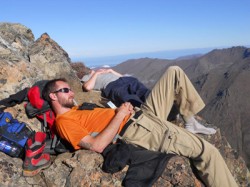
This disease does not have a quick manifestation, it develops gradually. As a rule, it consists of 4 stages, each of which is characterized by its symptoms. Consider more each of the stages of mountain sickness:
- Easy stage begins to appear at a height of 3000-4000 m. At the same time, a person notices the following symptoms:
- loss of appetite and feeling nausea;
- diarrhea;
- Increased pressure characterized by noise in the ears or appearance of points before eyes;
- sleep disturbance;
- mood differences, feeling of apathy.
- The middle stage takes place when lifting a height of 4000-5500 m. Symptoms become more unpleasant:
- Depressed mental state;
- nausea and vomiting;
- increasing body temperature;
- pulsating headache;
- Reducing the concentration of attention.
- Heavy stage arises at an altitude of 5500-6000 m above sea level. Her manifestations are even more serious:
- Incessant headache, which is difficult to overcome even with the help of analgesics;
- severe vomiting;
- constant cough;
- Dizziness, loss of orientation in space.
- Very heavy stage manifests itself at a height of 6000 m. All of the above symptoms are felt several times stronger. The extreme stages of mountainous disease are swelling of the brain and lungs. To avoid lethal exodus, it is recommended to immediately reduce the height to more safe.
Prevention of the development of altitude disease
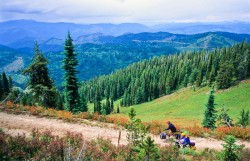
It is known that its prevention is best treatment. Therefore, to conquer the peaks is better to prepare.
- So that there are no problems with cardiovascular and respiratory systems, three times a week jogging for 30-40 minutes. It should be started 3 months before a hike in the mountains.
- 2 months before the climb, we offer the course of drugs that increase hemoglobin.
- If you are prone to headaches, meteo-sensitive or suffer Osteochondrosis The cervical spine, you need to undergo a course of drugs that improve the blood circulation of the brain.
- Reception Polyvitamins Mandatory for all those wishing to visit the mountain ranges. Start drinking vitamins you need a month earlier, and in the mountains to continue receiving tablets.
- Daily use of acetylsalicylic acid and vitamin C will help Blood salvage and supply of all organs with oxygen. Take these drugs needed, being directly in highlands.
- All necessary drugs should be present in the cartoon aid kit: analgesics from headaches, anti-spirited and immunomodulatory products, sputum dilution tablets and to reduce body temperature.
Successful acclimatization as a means of preventing mining

In order to reduce the manifestation of high-altitude disease, you need to properly undergo acclimatization in high-mountainous regions. To do this, follow several rules:
- Use a toothed lifting scheme to the mountain. This means that rising to the place of overnight stay, you need to go through a few hundred meters up and spend there for some time. Better to give the body any exercise. Then you can go back to the place where you are going to sleep.
- When the peaks are conquered above 3000 m, try not to overdo it, go up on a day no more than 600 m. Through every thousand meters traveled for a day.
- In order to check how the body gets used to height, check the morning and evening pulse. If in the morning its frequency is 10-20% below, it means that acclimatization is successful. If the morning pulse is above the evening, then make yourself an extra holiday on the peak.
- Do not rise to the mountains on transport - so the height is gaining too rapidly pace and the body does not have time to adapt.
- Avoid strong physical exertion within 2 days after lifting.
- Do not take alcohol in the mountains.
- Eat often and small portions, preferred a diet rich in carbohydrates.
Observe all the necessary precautions and listen to yourself - it will help you to avoid serious manifestations of mountainous disease and keep health and well-being.

